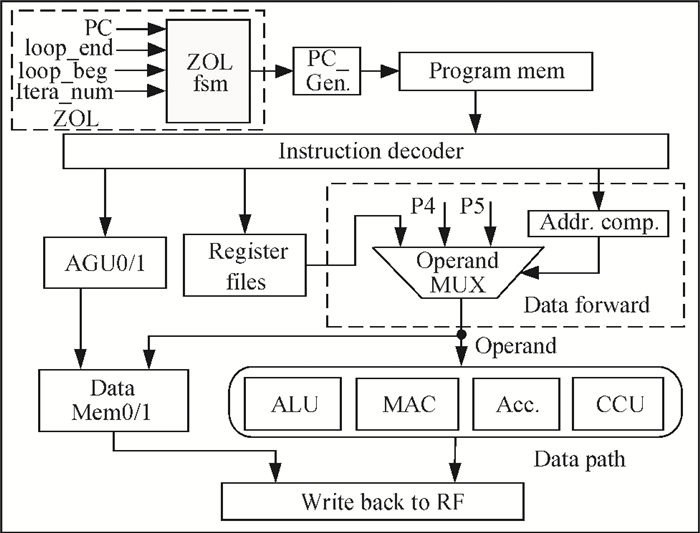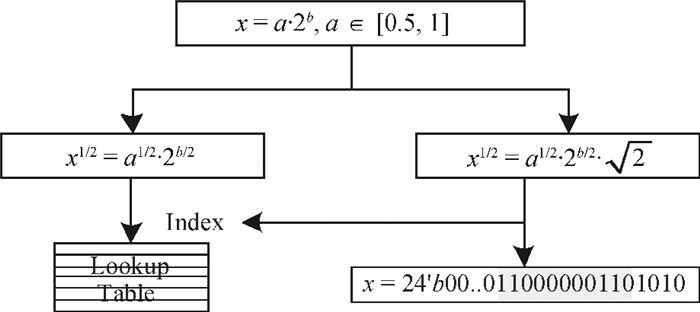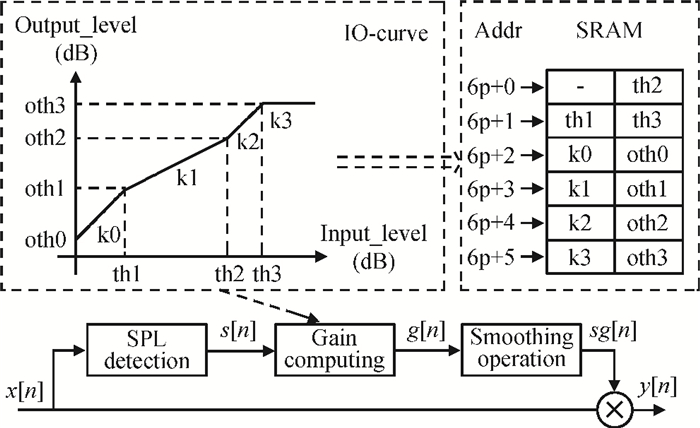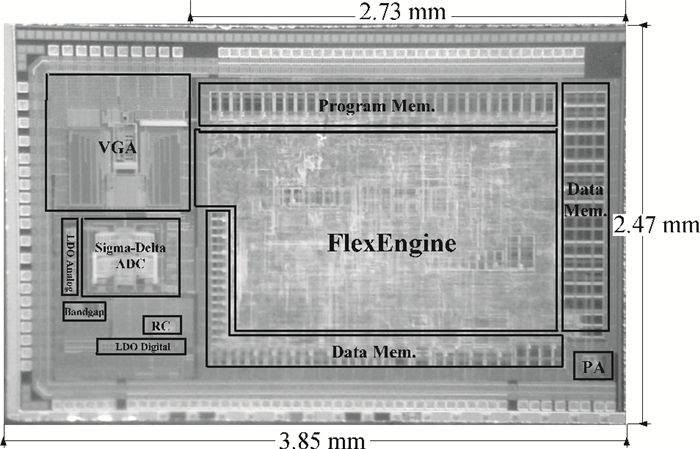| Citation: |
Jia Yuan, Liming Chen, Zenghui Yu, Yong Hei. A sub-milliwatt audio-processing platform for digital hearing aids[J]. Journal of Semiconductors, 2014, 35(7): 075008. doi: 10.1088/1674-4926/35/7/075008
****
J Yuan, L M Chen, Z H Yu, Y Hei. A sub-milliwatt audio-processing platform for digital hearing aids[J]. J. Semicond., 2014, 35(7): 075008. doi: 10.1088/1674-4926/35/7/075008.
|
A sub-milliwatt audio-processing platform for digital hearing aids
DOI: 10.1088/1674-4926/35/7/075008
More Information
-
Abstract
We present a novel audio-processing platform, FlexEngine, which is composed of a 24-bit application-specific instruction-set processor (ASIP) and five dedicated accelerators. Acceleration instructions, compact instructions and repeat instruction are added into the ASIP's instruction set to deal with some core tasks of hearing aid algorithms. The five configurable accelerators are used to execute several of the most common functions of hearing aids. Moreover, several low power strategies, such as clock gating, data isolation, memory partition, bypass mode, sleep mode, are also applied in this platform for power reduction. The proposed platform is implemented in CMOS 130 nm technology, and test results show that power consumption of FlexEngine is 0.863 mW with the clock frequency of 8 MHz at Vdd=1.0 V. -
References
[1] Wei C W, Kuo Y T, Chang K C. A low-power mandarin-specific hearing aid chip. IEEE Asian Solid-State Circuits Conference, Beijing, China, 2010 https://www.infona.pl/resource/bwmeta1.element.ieee-art-000005716623[2] Chau E, Sheikhzadeh H, Brennan R. A subband beamformer on an ultra low-power miniature DSP platform. Proc ICASSP, Orlando, FL, 2002, 3: 2953 http://www.onsemi.cn/site/pdf/ICASSP2002_Beamforme.pdf[3] Chang K C, Chen Y W, Kuo Y T. A low power hearing aid computing platform using lightweight processing elements. IEEE International Symposium on Circuits and System, ISCAS, 2012: 2785 http://ieeexplore.ieee.org/document/6271888/[4] Liu D. Embedded DSP processor design, application specific instruction set processor. Morgan Kaufmann Publishers, 2008 https://searchworks.stanford.edu/view/8254936[5] Kates J M. Digital hearing aids. Oxfordshire: Plural Publishing, 2008 http://ci.nii.ac.jp/ncid/BA86669715[6] Brennan R, Schneider T. A flexible filterbank structure for extensive signal manipulations in digital hearing aids. Proc IEEE Int Symp Circuits Syst, 1998: 569 http://www.onsemi.jp/site/pdf/Filtering_Hearing_Ai.pdf[7] Chi H F, Gao S X, Soli S D. A novel approach of adaptive feedback cancellation for hearing aids. Proc IEEE Int Symp Circuits Syst, 1999: 195 http://ieeexplore.ieee.org/document/778818/?reload=true&arnumber=778818&filter%3DAND(p_IS_Number:16885)[8] Kamath S, Loizou P. A multi-band spectral subtraction method for enhancing speech corrupted colored noise. Proc IEEE Int Conf Acoust, Speech, Signal Process, 2002: 4164 http://ieeexplore.ieee.org/document/5745591/authors[9] Chen J, Benesty J, Huang Y, et al. New insights into the noise reduction Wiener filter. IEEE Trans Audio, Speech, Lang Process, 2006, 14(4): 1218 doi: 10.1109/TSA.2005.860851[10] Ephraim Y, Malah D. Speech enhancement using a minimum mean-square error log-spectral amplitude estimator. IEEE Trans Acoust, Speech, Signal Process, 1985, 33(2): 443 doi: 10.1109/TASSP.1985.1164550 -
Proportional views





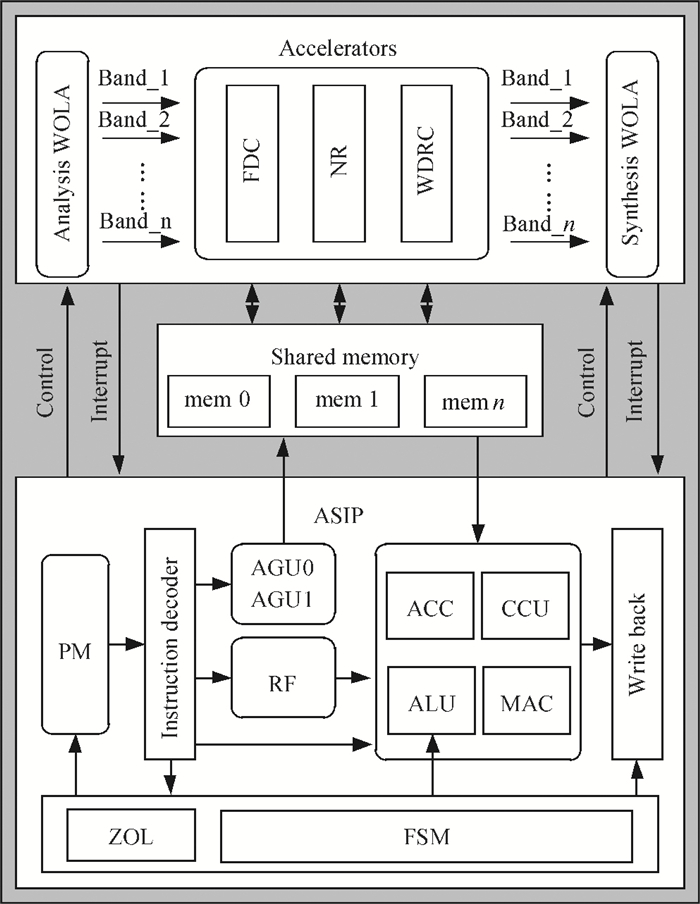
 DownLoad:
DownLoad:
